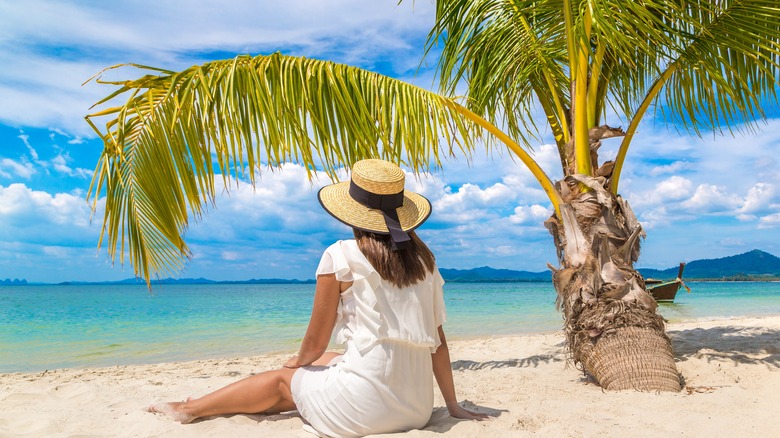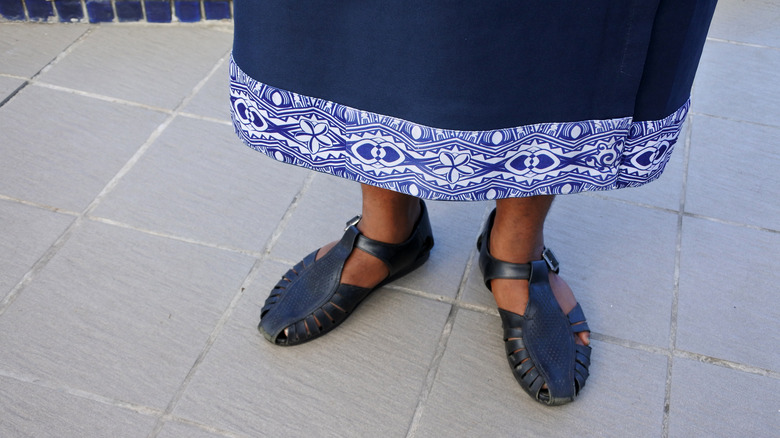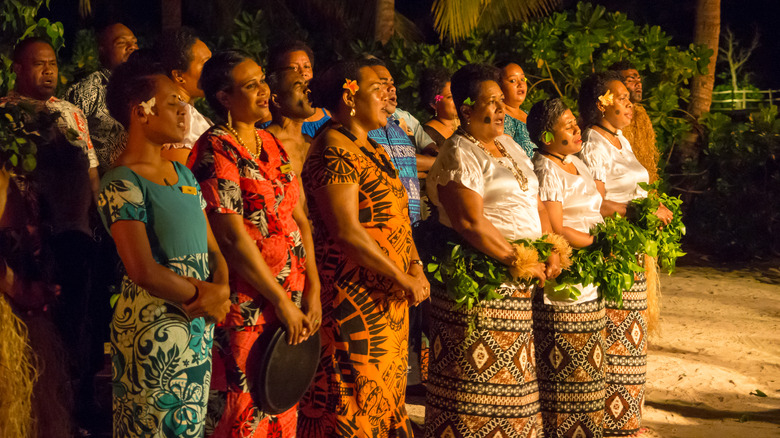The Unexpected Dress Code Tourists Need To Know Before Visiting Fiji
When you think of Fiji, you may dream of walking the long stretches of beach and feeling the soft caress of tropical winds. Or your mind may drift to the water activities, abundant wildlife, and cultural celebrations to explore. Don't forget the history and delicious food, too. It can take a while to figure out which of the over 300 islands in Fiji to visit, but once you do, it's time to pack. While doing so, carefully consider your clothing choices. Whether you find yourself on the unspoiled Yasawa Islands or opt for the remote island of Kadavu, you'll want to include some more conservative options.
As inhabitants of a predominantly Christian and Hindu nation, many Fijians dress modestly. While tanks or swimsuits work on the beach and in most areas of the resort, you'll be expected to cover your shoulders and knees out of respect when you visit the homes and villages of the locals. You don't need to stress about this (you're on vacation, after all); just take note so you don't create an uncomfortable situation. If you want an easy rule of thumb, wear beachwear at the beach, resort wear at the resort, and business casual in formal settings — with a few twists.
How to dress outside of Fijian resorts
If your ideal Fiji vacation consists of moving from the beach to the pool to the bar, you only need to review the resort's clothing recommendations. However, if you visit a local village or church, grab a garment to cover your shoulders and knees. Women can use a shawl, sweater, or jacket. Alternatively, consider a sarong, the perfect multi-purpose option for a quick cover-up at the beach, when you enter a restaurant, or as you approach a settlement. It can function as a scarf, shoulder cover, or skirt. Resorts that offer village tours may even provide a sulu, a Fijian sarong. You'll also see them sold throughout the towns.
Men also need to cover up. Throw on a T-shirt or dress like a local with a bula" thought of by some as a Hawaiian or Aloha shirt. Shorts that go down to the knees will work, but men should also consider wrapping a pocket sulu around their body to create a long skirt. You'll likely see many locals wearing them, so you don't need to feel self-conscious.
To further adhere to Fijian dress etiquette, note that only the chief can wear a hat, so remove headwear before entering any village. In fact, Fijians view the head as sacred. Avoid touching someone else's head (even children), and don't wear anything on your own, including sunglasses.
Other Fijian cultural etiquette
In addition to dressing conservatively when visiting rural areas and sacred places, you'll want to consider a few other details before visiting any of the top-rated Fiji islands. For example, it's customary to remove your shoes before entering someone's home. You also might want to bring books or crayons for the kids or present a gift of kava to your host. When entering a village, remove shoulder bags and backpacks. Leave them behind or carry them so as not to offend.
Similarly, embrace the experience if you're invited to participate in any activity. A local may pass you a coconut shell of yaqona(kava), a national drink proudly shared in a ceremonial way. Politely take a sip and pass it along to others. You may receive an invitation to make music, dance, or play a sport. Take the opportunity to learn something new and connect with the people.
Fijians are known as generally soft-spoken and temperate people. Match the harmonizing vibe by not raising your voice or engaging in dramatic behavior. Instead, return the friendly local vibe by greeting those you pass. Learn a few local phrases to show your willingness to understand and experience the essence of the islands. Try out the local greeting of "bula" and the phrase for thank you, "vinaka."


